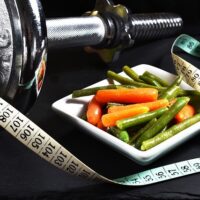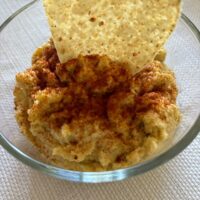How to Get the Results You Want
When people talk about their health and fitness goals, generally, they say things like:
⚖️ I want to lose 20 pounds.
🧘🏻 I want to be less stressed.
🏃🏾♀️ I want to run a sub-30-minute 5K.
These are all examples of outcome-based goals—goals that focus on a desired outcome or result. 
It’s fine to frame goals like this… in casual conversation.
But it’s not so great for actually improving or progressing toward that goal.
That’s because wanting an outcome isn’t enough. (Even if you really, really, REALLY want it.)
Why?
Because we (usually) can’t control outcomes.
You can have crystal clear vision of your goal—plus all the motivation in the world—but then:
You get slammed with work.
Your kid goes through a mental health crisis.
Your gym closes for, like, TWO YEARS.
You develop problems sleeping.
Your knee decides it hates running.
And poof!
There goes your goal—up in smoke. Staring at the ashes of your former goals can feel like a personal failure.
However, you might’ve had little to do with your goal not working out. It’s just that things beyond your control—work, other people, your biology—didn’t cooperate.
But if results are out of your hands, how are you supposed to improve at anything?
Meet: Behavior-based goals.
Behavior-based goals are centered on the ACTIONS you take, like eating slowly at every meal, practicing a daily meditation session, or doing some type of training or active recovery most days of the week.
Because you have MUCH more control over your behaviors, behavior-based goals are more effective—and more empowering.
Here are a few examples of turning outcome goals into behavior goals:
EXAMPLE 1
Outcome goal: Lower blood sugar
Behavior goal: Take a 20-minute daily walk 
EXAMPLE 2
Outcome goal: Sleep 8 hours a night
Behavior goal: Create a calming bedtime routine and start it 30 minutes before bedtime
EXAMPLE 3
Outcome goal: Improve relationship with partner
Behavior goal: Have a date night once a week
How to set a behavior goal—TODAY.
What to Do
► Write down the outcome you want. (Let’s say it’s, “Lose 20 pounds.”) 
► Then, write down some skills you think you’ll need to get that outcome. (For example, one might be “meal prep.”)
► Next, write down a behavior you can do today that’ll help build those skills. (Buy and wash blueberries and put them in a container that’s easily accessible.)
► Try to do the behavior consistently. (In the example above, maybe you prep a bunch of fruit on Sunday and again on Wednesday, so you have healthy snacks available all week.)
You may not always follow through, and that’s okay. Progress is almost never a straight line in the direction you want to head.
But by focusing on the behavior and not just “lose 20 pounds,” you keep your attention on the part you can control.
That’s truly how you achieve amazing things over time.
If you need some help figuring out a list of behavior goals to work on in order to achieve the outcome you desire, shoot me an email and we’ll set up a time to figure it out together.
Much love,
Health Coach Carol
“It’s not about perfect. It’s about effort. And when you bring that effort every single day, that’s where transformation happens. That’s how change occurs.” — Jillian Michaels






